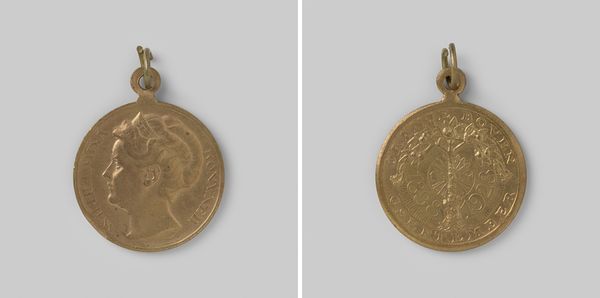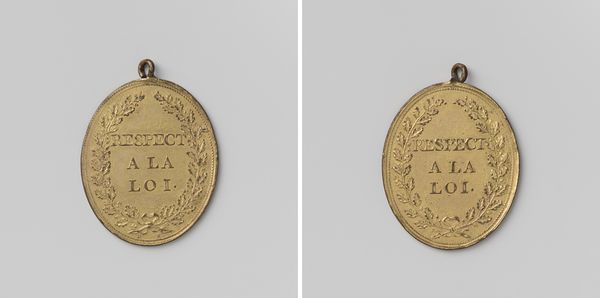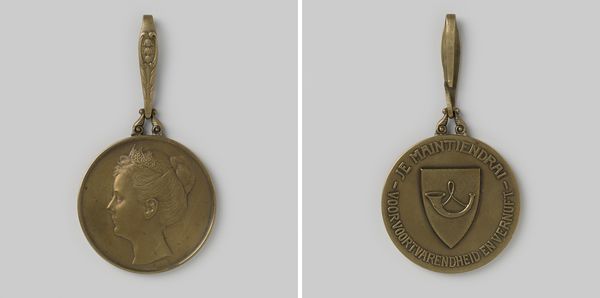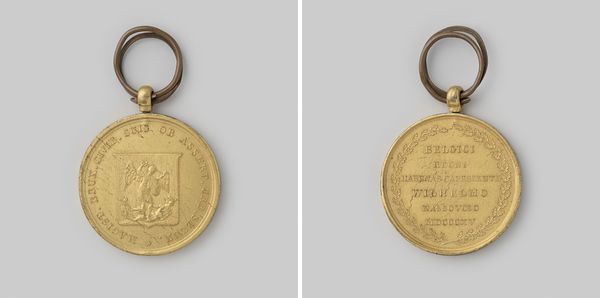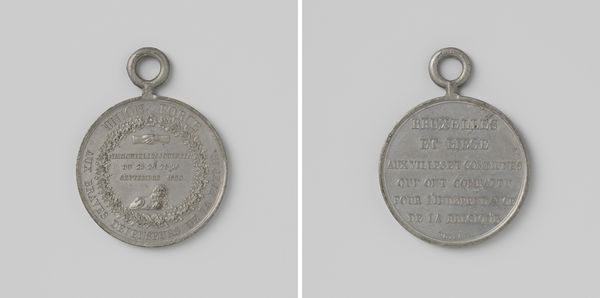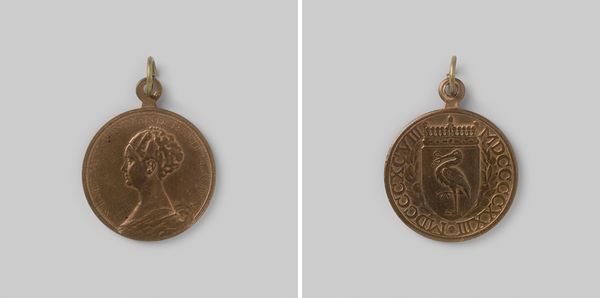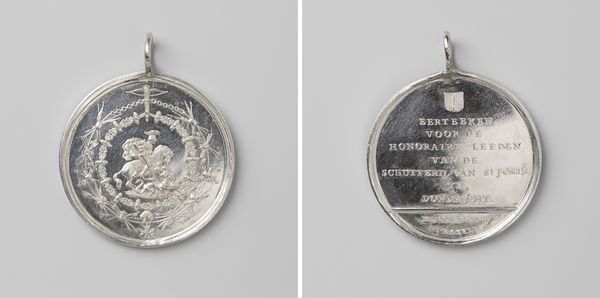
metal, gold, engraving
#
portrait
#
medal
#
neoclassicism
#
metal
#
gold
#
history-painting
#
engraving
#
miniature
Dimensions: diameter 2.2 cm, diameter 1.8 cm, diameter 1.5 cm, weight 1.65 gr
Copyright: Rijks Museum: Open Domain
Editor: This is "The Battle of Waterloo, in honor of the Duke of Wellington and Blucher," a gold medal made in 1815. The inscription around the edge is interesting, but overall, it seems a very small piece to commemorate such a large event. What's your read on this, in its historical context? Curator: It's true, the scale is deceptively small. Think about how medals like this functioned within the social and political landscape of the time. They were not just personal mementos. These gold medals, often commissioned by governments or aristocratic groups, were tools for shaping public memory of the battle and reinforcing a specific narrative of victory. Editor: A tool? In what way? Curator: Consider the images themselves. You've got that figure on the front, an angel holding what appears to be a victory wreath. Then, the inscription commemorating Wellington and Blücher. Medals were circulated among elites and awarded to soldiers, and these served as pocket-sized propaganda, reminding people who was in charge and the supposed righteousness of their cause, which reinforced national identity after years of war. Who received this medal was equally significant as its symbolic message. Do you see how access to this imagery shaped public perception? Editor: I hadn't considered that. So, this little object, repeated and distributed, was part of constructing a larger story about power and national pride? It seems like quite the spin, considering the true horrors of the battlefield. Curator: Exactly! The medal avoids representing the grim reality of war entirely, offering instead an idealized image that emphasized heroism and divine favor. It prompts the question, doesn't it? What are the ethical implications of celebrating victory when its human cost is conveniently ignored? Editor: This really reframes how I see this medal. It's less about commemorating individual heroism and more about manipulating collective memory for political ends. It makes you wonder what stories are left untold when only certain versions of history get gilded. Thanks for helping me see this on a much grander scale. Curator: Precisely. By focusing on the political context and the public role of art, we can understand this object as an active agent in shaping history.
Comments
No comments
Be the first to comment and join the conversation on the ultimate creative platform.
